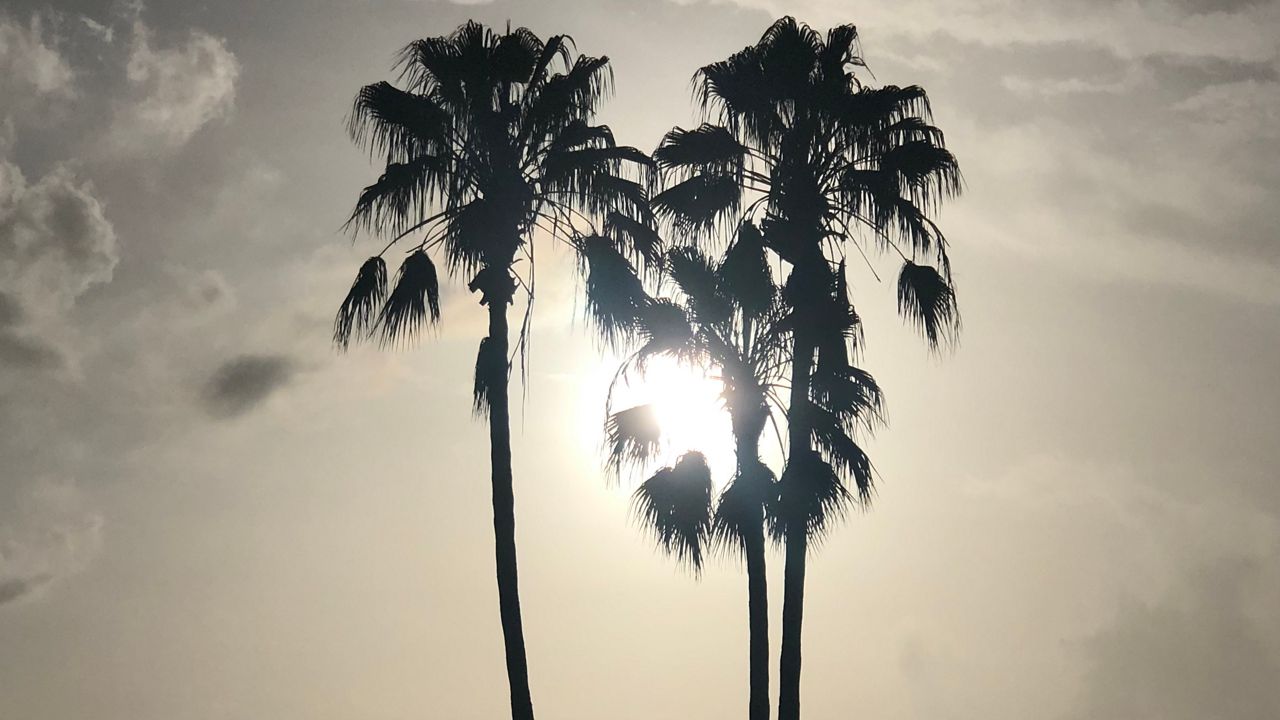The first plume of Saharan dust made its way to Florida earlier this week, bringing beautiful sunrises and sunsets across much of the southeast.
Now, as we head through the upcoming weekend and into next week, more dust could be on the way, bringing several impacts to the Sunshine State.
African dust is not new to the Sunshine State. During the summer months, the African trade winds increase across the continent. These winds will kick up thousands of tons of fine particles and minerals blown from the Sahara Desert in Africa.
These particles can travel great distances, thanks to a large temperature gradient between the intense warm air over the continent and the cooler waters offshore. That temperature difference creates massive areas of rising air, which can help capture the dust in the trade winds.
This dust can then travel across the Atlantic Ocean for thousands of miles, sometimes making it to the United States.

Annually, more than 180 million tons of dust leave the African continent.
While the first plume of dust which reached Florida earlier this week was rather low in concentration, it’s the second plume set to arrive this weekend and into early next week that could be slightly higher.
The most noticeable effects of the dust is through the scattering and absorption of sunlight. As light from the sun hits these particles, the shorter wavelengths of blues and purples get scattered out, leaving the longer red and orange wavelengths to dominate the sky.
That’s why our sunsets and sunrises can seem so vivid and colorful when African dust is present.
During the day, the sky can appear hazy or even milky. The amount of dust overhead will greatly impact how hazy your skies are. That dust can also affect precipitation patterns, helping to detract from moisture in the atmosphere and ultimately lowering your rainfall chances each afternoon.
Largely, these plumes of dust won’t hinder you too much from going about your normal day-to-day routine. But for those of you with sensitivity to air pollutants or with pre-existing conditions, it can cause some discomfort.
Saharan dust particles are exceptionally tiny, which means respiratory problems can become a hazard for those individuals that may battle asthma or allergies. If you have those conditions, it’s best to limit your time outdoors.
The dust, when in high enough concentrations, can settle in on surfaces such as picnic tables or even your car or truck. This could cause the need for more frequent cleaning and maintenance to keep these objects clean.
While most will be able to go outside without worry of the dust causing any issues, if you do battle irritation of the eyes, throat or skin because of pollutants, make sure you limit that time outdoors.
And keep abreast of your local pollen and air quality forecasts. Spectrum News provides your pollen forecast every hour at :51 past and we will alert you to any air quality concerns on our newscast and online.
African dust is a lifesaver with tropical development. Just like how it can reduce rain chances for the state of Florida, the dust can also reduce moisture needed for tropical systems to develop in the Atlantic basin.
Saharan dust can suppress or inhibit formation and intensification of tropical systems during the summer months. This dry air helps to disrupt the vertical structure of any already developed systems, making it more difficult for them to organize and strengthen.
However, dust is not the end all be all for tropical development. Many storms have been able to overcome the dry air in the past.
It’s important to not rely solely on the dust for limiting development in the tropical Atlantic. Instead, it’s advised you stay abreast of the tropical weather pattern, even when Saharan dust is in the Atlantic basin.
Our team of meteorologists dives deep into the science of weather and breaks down timely weather data and information. To view more weather and climate stories, check out our weather blogs section.



